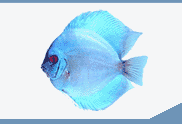

 |
||||||||||||
 |
||||||||||||
| Use of Antibiotics in Ornamental Fish Aquaculture | ||||||
| Roy P. E. Yanong | ||||||
Introduction Antibiotics are very useful additions to any fish-health managers toolbox, but they are only tools and not 'magic bullets.' The ability of antibiotics to help eliminate a fish disease depends on a number of factors: 1) Does the problem actually have a bacterial component? 2) Are the bacteria involved sensitive to the antibiotic chosen? 3) Are the proper dosage and treatment intervals being used? 4) Have other contributing stresses been removed or reduced? Antibiotics, in and of themselves, do not cure the fish. Antibiotics merely control the population of bacteria in a fish long enough for its immune system to eliminate them. Before antibiotics are even considered, sources of stress such as poor water quality (including drastic temperature change), nutrition, genetics, and handling or transport must be removed or reduced. Affected fish should also be examined for parasites. Any of these factors may be the primary cause of disease, as bacterial infections are often secondary to such management problems. Contacting a fish health specialist early in the disease outbreak will help identify contributing stresses and the rate of bacterial infection so total losses of fish will be reduced. Gram-positive Bacteria versus Gram-negative Bacteria Most bacteria that infect fish fall into one of two groups gram-positive or gram-negative. These groups are named based on their response to a protocol called gram staining. Gram-positive bacteria stain blue, and gram-negative bacteria stain pink. They stain differently because each group has a different type of outer structure known as the cell wall. This difference is important for the producer and aquaculturist because some antibiotics work better against gram-positive bacteria and others work better against gram-negative bacteria. Most bacteria that infect fish are gram-negative, including Aeromonas hydrophila, Aeromonas salmonicida, Flavobacterium columnare (which causes columnaris), Vibrio, and Pseudomonas species. (See UF/IFAS Fact Sheets FA-14 Aeromonas Infections, FA-31 Vibrio Infections of Fish and FA-11 Columnaris Disease) The major group of gram-positive bacteria that cause disease in fish are Streptococcus. (See UF/IFAS Circular 57 Streptococcal Infections in Fish.) A third group, the acid-fast bacteria, which includes Mycobacterium species, will not be discussed in this publication because they are considerably different from most other bacteria (see UF/IFAS Fact Sheet VM-96 Mycobacteriosis in Fish). more ... |
 |
|||||
| About Us :: Message Board :: Chat | |||||
| Library :: Photo Gallery :: Links & Resources :: Breeders & Sponsors :: Merchandise | |||||
| Website designed by: EthanCote.com | © 2001-2004, SimplyDiscus.com. All Rights Reserved. | ||||